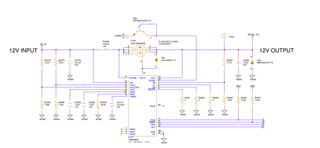Other Parts Discussed in Thread: CSD16556Q5B
Hello,
I'm testing the following circuit.

I'm having an issue similar to the one reported in this thread. I have damaged several devices during testing. The gate drive pin appears to be damaged and it is not turning on the pass FET. On the damaged devices, I measure between 1 and 200Ω on the gate pin. On a functioning device, I measure 20MΩ.
I had some devices fail during startup and short testing. The devices worked for some time until they eventually failed. We had other devices during normal use. That is, they would have only been exposed to power cycling, no invasive short testing.
In the related link, the suggestion is to add 10Ω in series with the gate. Can you explain why you made this suggestion? Will this prevent the damage I'm seeing to the gate pin?
Thanks
John


